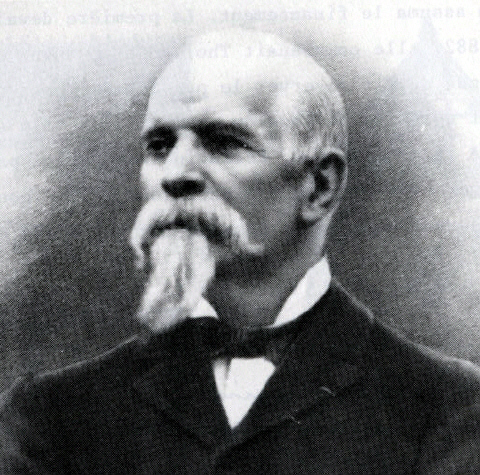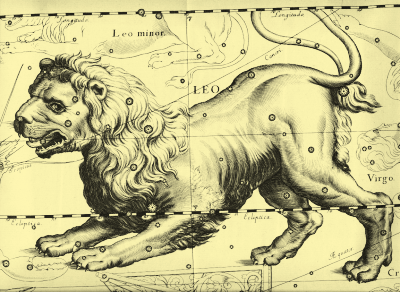|
170 Maria
Maria (minor planet designation: 170 Maria) is a Main belt asteroid that was discovered by French astronomer Henri Joseph Perrotin on January 10, 1877. Its orbit was computed by Antonio Abetti, and the asteroid was named after his sister, Maria. This is the namesake of the Maria asteroid family; one of the first asteroid families to be identified by Japanese astronomer Kiyotsugu Hirayama in 1918. In the Tholen classification system, this is categorized as a stony S-type asteroid. Observations performed at the Palmer Divide Observatory in Colorado Springs, Colorado during 2007 produced a light curve with a period of 13.120 ± 0.002 hours and a brightness range of 0.21 ± 0.02 in magnitude. Previous measurements from 2000 gave 13.14 and 5.510 hour estimates for the period. Based upon its spectrum, it is classified as an S-type asteroid. An occultation of a star by Maria was observed from Manitoba, Canada, on June 10, 1997. References External links Lightcurve plot of 170 ... [...More Info...] [...Related Items...] OR: [Wikipedia] [Google] [Baidu] |
Henri Joseph Perrotin
Henri Joseph Anastase Perrotin (December 19, 1845 – February 29, 1904) was a French astronomer and a discoverer of minor planets. Some sources give his middle name as Athanase. In his early career, he and Guillaume Bigourdan were assistants of Félix Tisserand at Toulouse Observatory. Later, he was the first director of the Nice Observatory in Nice, France from 1884 until his death. He made observations of Mars and attempted to determine the rotation period of Venus. He also calculated perturbations in the orbit of 4 Vesta. In the literature, he is sometimes referred to as Henri Perrotin and sometimes as Joseph Perrotin (this is indeed one and the same person). He is also referenced in H.G Well's novel "The War of The Worlds" as "Perrotin of Nice". His 6 asteroid discoveries are credited by the Minor Planet Center to "J. Perrotin". He won the Prix Lalande in 1875 and 1883. The Martian crater '' Perrotin'' and the inner main-belt asteroid 1515 Perrotin _ ... [...More Info...] [...Related Items...] OR: [Wikipedia] [Google] [Baidu] |
Light Curve
In astronomy, a light curve is a graph of light intensity of a celestial object or region as a function of time, typically with the magnitude of light received on the y axis and with time on the x axis. The light is usually in a particular frequency interval or band. Light curves can be periodic, as in the case of eclipsing binaries, Cepheid variables, other periodic variables, and transiting extrasolar planets, or aperiodic, like the light curve of a nova, a cataclysmic variable star, a supernova or a microlensing event or binary as observed during occultation events. The study of the light curve, together with other observations, can yield considerable information about the physical process that produces it or constrain the physical theories about it. Variable stars Graphs of the apparent magnitude of a variable star over time are commonly used to visualise and analyse their behaviour. Although the categorisation of variable star types is increasingly done from t ... [...More Info...] [...Related Items...] OR: [Wikipedia] [Google] [Baidu] |
S-type Asteroids (SMASS)
S-type asteroids are asteroids with a spectral type that is indicative of a siliceous (i.e. stony) mineralogical composition, hence the name. They have relatively high density. Approximately 17% of asteroids are of this type, making it the second most common after the carbonaceous C-type. Characteristics S-type asteroids, with an astronomical albedo of typically 0.20, are moderately bright and consist mainly of iron- and magnesium- silicates. They are dominant in the inner part of the asteroid belt within 2.2 AU, common in the central belt within about 3 AU, but become rare farther out. The largest are 3 Juno (about 240–250 km across) and 15 Eunomia (230 km), with other large S-types being 29 Amphitrite, 532 Herculina and 7 Iris. These largest S-types are visible in 10x50 binoculars at most oppositions; the brightest, 7 Iris, can occasionally become brighter than +7.0, which is a higher magnitude than any asteroid except the unusually reflective 4 Vesta ... [...More Info...] [...Related Items...] OR: [Wikipedia] [Google] [Baidu] |
Named Minor Planets
Named may refer to something that has been given a name. Named may also refer to: * named (computing), a widely used DNS server * Naming (parliamentary procedure) Naming is a procedure in some Westminster parliaments that provides for the speaker to temporarily remove a member of parliament who is breaking the rules of conduct of the legislature. Historically, "naming" refers to the speaker's invocation of ... * The Named (band), an American industrial metal group In literature: * '' The Named'', a fantasy novel by Marianne Curley * The Named, a fictional race of prehistoric big cats, depicted in '' The Books of the Named'' series by Clare Bell See also * Name (other) * Names (other) * Naming (other) {{disambiguation ... [...More Info...] [...Related Items...] OR: [Wikipedia] [Google] [Baidu] |
Discoveries By Henri Perrotin
Discoveries may refer to: Music * ''Discoveries'' (Cannonball Adderley album), 1955 * ''Discoveries'' (Josh Nelson album), 2011 * ''Discoveries'' (Northlane album), 2011 Other uses * ''Discoveries'' (film), a 1939 British film * Discoveries (horse), a racehorse * ''Discoveries'' (Robertson Davies), a 2002 book by Robertson Davies * ''Discoveries'' (TV series), a Canadian youth science television series which aired on CBC Television in 1957 * ''Abrams Discoveries'', a series of illustrated non-fiction books published by Harry N. Abrams * ''Discoveries'', a work by William Butler Yeats, written in 1907 * ''Discoveries'', a magazine published by Cedars-Sinai Medical Center See also * Age of Discoveries * Discovery (other) * Explorations (other) Explorations may refer to: *The plural of exploration Exploration refers to the historical practice of discovering remote lands. It is studied by geographers and historians. Two major eras of exploration occu ... [...More Info...] [...Related Items...] OR: [Wikipedia] [Google] [Baidu] |
Maria Asteroids
The Maria family (adj. ''Marian''; FIN: 506; also known as ''Roma family'') is a collisional asteroid family located in the inner parts of the intermediate asteroid belt, near the 1:3 Kirkwood gap. The family consist of several thousand stony S-type asteroids. It is named after its parent body and lowest numbered member, the asteroid 170 Maria. It is also known as the Roma family, named after its alternative parent body, 472 Roma. The family was initially identified by Japanese astronomer Kiyotsugu Hirayama in 1918. Asteroids in this family typically have a semi-major axis In geometry, the major axis of an ellipse is its longest diameter: a line segment that runs through the center and both foci, with ends at the two most widely separated points of the perimeter. The semi-major axis (major semiaxis) is the lo ... between 2.52−2.62 astronomical unit, AU, and an inclination of 12 to 17Degree (angle), °. Members The family consists of 2940 known members bas ... [...More Info...] [...Related Items...] OR: [Wikipedia] [Google] [Baidu] |
Brian D
Brian (sometimes spelled Bryan in English) is a male given name of Irish and Breton origin, as well as a surname of Occitan origin. It is common in the English-speaking world. It is possible that the name is derived from an Old Celtic word meaning "high" or "noble". For example, the element ''bre'' means "hill"; which could be transferred to mean "eminence" or "exalted one". The name is quite popular in Ireland, on account of Brian Boru, a 10th-century High King of Ireland. The name was also quite popular in East Anglia during the Middle Ages. This is because the name was introduced to England by Bretons following the Norman Conquest. Bretons also settled in Ireland along with the Normans in the 12th century, and 'their' name was mingled with the 'Irish' version. Also, in the north-west of England, the 'Irish' name was introduced by Scandinavian settlers from Ireland. Within the Gaelic speaking areas of Scotland, the name was at first only used by professional families of Ir ... [...More Info...] [...Related Items...] OR: [Wikipedia] [Google] [Baidu] |
NASA Jet Propulsion Laboratory
The Jet Propulsion Laboratory (JPL) is a federally funded research and development center and NASA field center in the City of La Cañada Flintridge, California, United States. Founded in the 1930s by Caltech researchers, JPL is owned by NASA and managed by the nearby California Institute of Technology (Caltech). The laboratory's primary function is the construction and operation of planetary robotic spacecraft, though it also conducts Earth-orbit and astronomy missions. It is also responsible for operating the NASA Deep Space Network. Among the laboratory's major active projects are the Mars 2020 mission, which includes the '' Perseverance'' rover and the '' Ingenuity'' Mars helicopter; the Mars Science Laboratory mission, including the ''Curiosity'' rover; the InSight lander (''Interior Exploration using Seismic Investigations, Geodesy and Heat Transport''); the ''Mars Reconnaissance Orbiter''; the '' Juno'' spacecraft orbiting Jupiter; the ''SMAP'' satellite for earth surfac ... [...More Info...] [...Related Items...] OR: [Wikipedia] [Google] [Baidu] |
Manitoba
, image_map = Manitoba in Canada 2.svg , map_alt = Map showing Manitoba's location in the centre of Southern Canada , Label_map = yes , coordinates = , capital = Winnipeg , largest_city = Winnipeg , largest_metro = Winnipeg Region , official_lang = English , government_type = Parliamentary constitutional monarchy , Viceroy = Anita Neville , ViceroyType = Lieutenant Governor , Premier = Heather Stefanson , Legislature = Legislative Assembly of Manitoba , area_rank = 8th , area_total_km2 = 649950 , area_land_km2 = 548360 , area_water_km2 = 101593 , PercentWater = 15.6 , population_demonym = Manitoban , population_rank = 5th , population_total = 1342153 , population_as_of = 2021 , population_est = 14 ... [...More Info...] [...Related Items...] OR: [Wikipedia] [Google] [Baidu] |
Star
A star is an astronomical object comprising a luminous spheroid of plasma held together by its gravity. The nearest star to Earth is the Sun. Many other stars are visible to the naked eye at night, but their immense distances from Earth make them appear as fixed points of light. The most prominent stars have been categorised into constellations and asterisms, and many of the brightest stars have proper names. Astronomers have assembled star catalogues that identify the known stars and provide standardized stellar designations. The observable universe contains an estimated to stars. Only about 4,000 of these stars are visible to the naked eye, all within the Milky Way galaxy. A star's life begins with the gravitational collapse of a gaseous nebula of material composed primarily of hydrogen, along with helium and trace amounts of heavier elements. Its total mass is the main factor determining its evolution and eventual fate. A star shines for most of its active life due t ... [...More Info...] [...Related Items...] OR: [Wikipedia] [Google] [Baidu] |
Occultation
An occultation is an event that occurs when one object is hidden from the observer by another object that passes between them. The term is often used in astronomy, but can also refer to any situation in which an object in the foreground blocks from view (occults) an object in the background. In this general sense, occultation applies to the visual scene observed from low-flying aircraft (or computer-generated imagery) when foreground objects obscure distant objects dynamically, as the scene changes over time. If the closer body does not entirely conceal the farther one, the event is called a ''transit''. Both transit and occultation may be referred to generally as ''occlusion''; and if a shadow is cast onto the observer, it is called an eclipse. The symbol for an occultation, and especially a solar eclipse, is file:Occultation symbol.svg (U+1F775 🝵). Occultations by the Moon The term occultation is most frequently used to describe lunar occultations, those relatively ... [...More Info...] [...Related Items...] OR: [Wikipedia] [Google] [Baidu] |


.jpg)



